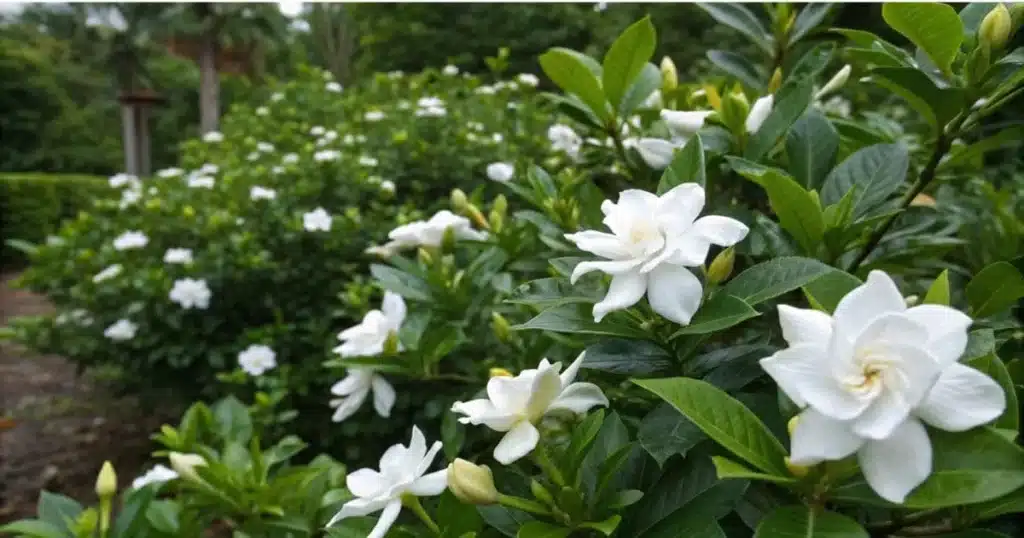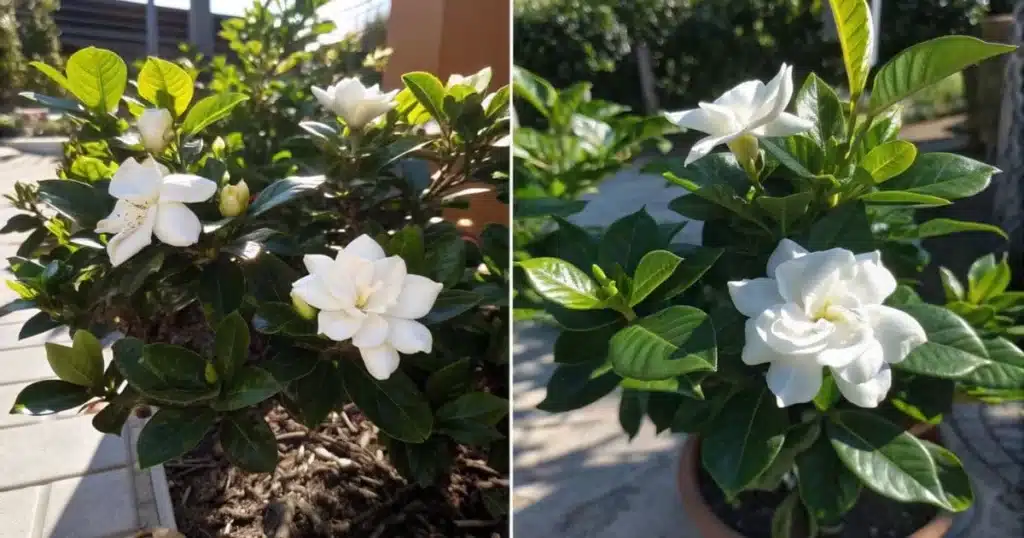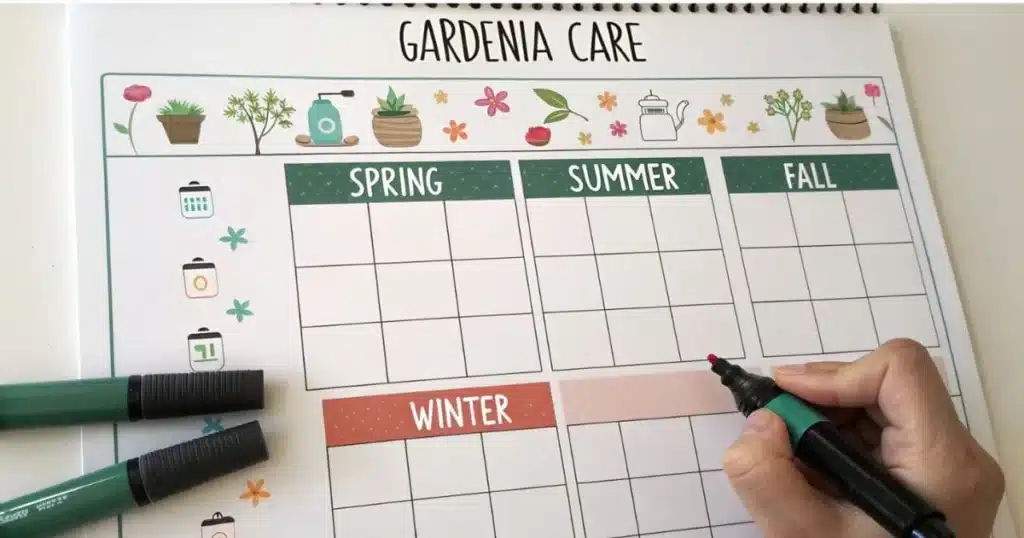The gardenia flower is a captivating plant known for its stunning beauty and delightful fragrance, making it a perfect addition to any garden. With over 140 different varieties, each one offers something unique, whether through its striking white blooms or its intoxicating scent. Gardenias are highly valued for their elegance and ability to elevate both outdoor and indoor spaces. In this article, we will dive into the different types of gardenia flowers, how to select the right one for your garden, and the best practices for cultivating and maintaining this enchanting plant to ensure it thrives throughout the year.
Table of Contents
Understanding gardenia flower Varieties
Popular Types of gardenia flower
Gardenia flowers come in many varieties, each with distinct features. Some of the most popular types include:
- Gardenia Jasminoides: Known as Cape Jasmine, this variety is famous for its creamy white, rose-like blooms that emit a sweet scent. It’s a favorite for both gardens and indoor pots.
- Gardenia Augustum: This type offers large, velvety blooms that are perfect for hedges or containers. Its strong fragrance makes it a popular choice for corsages.
- Pinwheel Gardenia: With its sweetly scented, pinwheel-shaped flowers, this gardenia stands out against its glossy green foliage.
Choosing the Right Gardenia flower for Your Garden

Selecting the right Gardenia flower involves considering your garden’s climate and space. Gardenias thrive in hardiness zones 8 to 10 but can adapt to other regions with care. Here are some tips:
- Climate Compatibility: Choose varieties like the Gardenia Jasminoides for warmer climates.
- Space Considerations: For smaller spaces, opt for dwarf varieties or those suitable for containers.
- Fragrance Preference: If fragrance is a priority, varieties like the Gardenia Augustum are ideal.
Unique Characteristics of Gardenia flower Species
Each gardenia species has its unique traits. For instance, the Gardenia Jasminoides is cherished for its glossy leaves and waxy flowers, while the Gardenia Augustum is noted for its robust blooms and intense scent.
Tip: Grafted gardenias, like the Everblooming Gardenia, combine beauty with resilience, making them excellent for challenging climates.
Understanding these characteristics will help you choose the best gardenia for your needs and ensure a flourishing addition to your garden.
To learn more about flower care tips, such as Pink Lily Flower, Pink Peonies, or other decorative plants and flowers, check out these additional articles.
Optimal Growing Conditions for Gardenias
Sunlight Requirements for Gardenias
Gardenias need a delicate balance of light to thrive. Ideally, they should get about four to six hours of sunlight daily. In hotter climates, it’s best to give them morning to mid-day sun, while providing some shade in the afternoon to prevent leaf scorch. In cooler areas, full sun exposure can be beneficial. For an indoor plant, positioning near a window with bright, indirect sunlight is ideal to mimic these conditions.
Ideal Soil and pH Levels
Gardenias flourish in acidic soil, with a pH range of 5.0 to 6.5. This type of soil is not only well-draining but also rich in organic matter. To achieve this, you can amend your soil with compost, manure, or peat moss. If you’re growing gardenias in a pot, use a potting mix specifically designed for acid-loving plants. Maintaining the right soil acidity is crucial for their health and vibrant blooms.
Temperature and Humidity Needs
Temperature and humidity play significant roles in the success of growing gardenias. They prefer daytime temperatures between 65°F and 70°F, with cooler nights around 60°F. High humidity, around 60%, is essential to keep pests like spider mites at bay. In dry conditions, misting your gardenias or using a humidifier can help maintain the necessary moisture levels. Remember, gardenias are sensitive to cold and can’t withstand temperatures below 15°F for extended periods.
Consistent care and attention to their growing conditions will reward you with stunning, fragrant blooms. Gardenias, though a bit picky, are worth the effort for any garden enthusiast.
Watering and Fertilizing Gardenias

Proper Watering Techniques
Keeping your gardenias happy starts with mastering the art of watering. These plants love moisture but hate being soggy. Aim to give them about an inch of water each week. It’s best to water deeply, letting the soil dry slightly between sessions. If you’re in a dry spell, consider misting your gardenias to boost humidity, which they adore.
Best Fertilizers for Gardenias
Feeding your gardenias the right way is key to their success. Go for fertilizers made for acid-loving plants, like azaleas or camellias. These mixes often have the right balance of nutrients. Try using a slow-release formula in early spring, right after the last frost hits. You can even sprinkle in some coffee grounds or fish emulsion for an extra boost.
Seasonal Watering and Feeding Tips

Adjusting your watering and feeding routine with the seasons can make all the difference. During the growing season, which is typically spring through summer, water more frequently and fertilize every three to four weeks. As fall approaches, scale back a bit. This helps prepare your gardenias for the winter months. Always keep an eye on the weather; if it’s particularly hot or dry, they might need a little extra attention.
Remember, consistency is key. Sudden changes in care can stress your gardenias, leading to issues like yellowing leaves or bud drop. Keep their environment stable, and they’ll reward you with beautiful blooms.
Pruning and Maintaining Gardenias
When and How to Prune Gardenias
Pruning is key to keeping your gardenias looking their best. The ideal time to prune is right after the main blooming period, which usually happens in late spring or early summer. This timing helps the plant recover and prepare for the next year’s blooms. Avoid pruning in late summer or fall as it might trigger new growth that won’t survive the winter.
Here’s how to do it:
- Deadhead spent flowers: Snip off the dead blooms to encourage the plant to focus on new growth.
- Trim overgrown branches: Cut back to a main stem or just above a leaf node to keep the shape.
- Thin dense areas: This improves air circulation and reduces the risk of diseases.
Dealing with Common Gardenia Pests
Gardenias, like any other plant, attract pests such as whiteflies and aphids. If you notice these pests, start by pruning infested foliage. A good rinse with water can also help. If the problem persists, consider using an insecticide.
Discover sustainable pest control techniques through the EPA’s Integrated Pest Management principles
Maintaining Gardenia Health Year-Round
For year-round health, gardenias need proper care. If you notice yellowing leaves, it may be a sign of nutrient deficiency or improper watering. Adjust your care routine by checking soil conditions and ensuring your Gardenia flower receives adequate water, especially if it’s a potted plant.
“Gardenias are an evergreen shrub with lush green foliage that thrive in partial shade. With the right care, they can be a stunning addition to any garden.”
Troubleshooting Gardenia Problems
Gardenias are beautiful, but they can be a bit finicky. If you’re having trouble with them, you’re not alone. Let’s break down some common issues and how to tackle them.
Identifying Common Gardenia flower Issues
Gardenias can face a variety of problems, from pests to environmental stress. Spider mites, for instance, are tiny pests that can cause leaves to speckle and fall. You might also see yellow leaves, which could mean your plant is struggling with chlorosis due to poor soil drainage or a lack of nutrients. Keeping an eye out for these signs early can save your plant.
Solutions for Yellowing Leaves
Yellow leaves on gardenias often signal a nutrient deficiency or poor drainage. To fix this, ensure your soil is well-draining and slightly acidic, with a pH between 5.0 and 6.5. You might need to add some iron supplements if the soil lacks it. Also, be careful not to overwater, as this can worsen the problem.
Preventing Bud Drop and Flower Loss
Bud drop in gardenias can be frustrating. It’s usually caused by sudden changes in temperature, light, or water. To prevent this, try to keep conditions stable. Maintain even moisture in the soil and avoid moving the plant once buds have formed. Consistent care is key to keeping those blossoms thriving.
Consistency is your best friend when caring for gardenias. Keep their environment stable, and you’ll enjoy their beautiful blooms for longer.
Enhancing Gardenia Blooms
Maximizing Bloom Potential
Gardenias, with their fragrant flowers and glossy leaves, can be the highlight of your dream garden. To get the most out of your gardenia’s blooming season, ensure the soil is well-drained and consistently moist. A great tip is to use coffee grounds as a natural fertilizer. This not only enriches the soil with essential nutrients like nitrogen and magnesium but also helps maintain the acidic conditions gardenias love. Consistent care and environment are key to maximizing your gardenia’s bloom potential. Keep an eye on the soil moisture and avoid letting it dry out completely.
Using Gardenias in Floral Arrangements
Gardenias, often known as “cape jasmine,” are perfect for floral arrangements due to their stunning white flowers. Once you cut the flowers, trim the stems at a 45-degree angle to allow better water absorption. This helps the flowers stay fresh longer. Consider pairing them with other blooms that complement their white hue for a beautiful bouquet. Remember to change the water regularly to keep the arrangement looking its best.
Extending the Blooming Season
To extend the blooming season of your gardenias, regular feeding during the growing season with a balanced fertilizer is essential. Pruning after the blooming period can also encourage new growth. Watch out for pests like aphids and whiteflies, which can be managed with insecticidal soap. Additionally, combat issues like sooty mold and powdery mildew early to keep your plants healthy. With these steps, you can enjoy your gardenias’ blooms for a longer period, adding elegance to your garden design idea.
Conclusion
Taking care of gardenias might seem a bit tricky at first, but once you get the hang of it, it’s really rewarding. These fragrant beauties can transform any garden or home with their lovely white blooms and glossy green leaves. Remember, they love a bit of sun, some shade, and a good drink of water. Keep an eye on the temperature and make sure they have the right soil to thrive. With a little patience and attention, your gardenias will flourish, bringing a touch of elegance and a sweet scent to your space. So, roll up your sleeves and enjoy the journey of growing these stunning flowers!
Frequently Asked Questions
Do gardenias prefer sun or shade?
Gardenias enjoy a mix of both. They like full sun, but during hot summer days, they appreciate some shade to prevent their leaves from burning.
How can I keep gardenias blooming?
To help gardenias bloom, make sure their soil stays moist and well-drained. Regular watering is key, especially when the soil feels dry.
Are coffee grounds good for gardenias?
Yes, coffee grounds can be beneficial for gardenias. They’re rich in nutrients like potassium and nitrogen, which help gardenias grow better.
Can gardenias grow well in pots?
Gardenias can thrive in pots, making it easier to move them around for optimal sunlight. In winter, you can bring them indoors to keep them safe from the cold.
What should I do if my gardenia leaves turn yellow?
Yellow leaves might mean your gardenia flower needs more iron or that its soil is too wet. Try adjusting the watering schedule and consider using a fertilizer rich in iron.
How do I prune gardenia flower ?
Prune gardenia flower after it blooms. Clip away dead or long branches to help the plant grow bushier and healthier.


4 thoughts on “Gardenia Flower: Guide to Growing Beautiful Blooms”